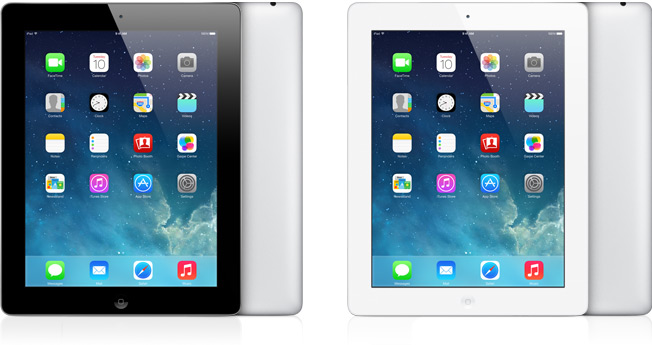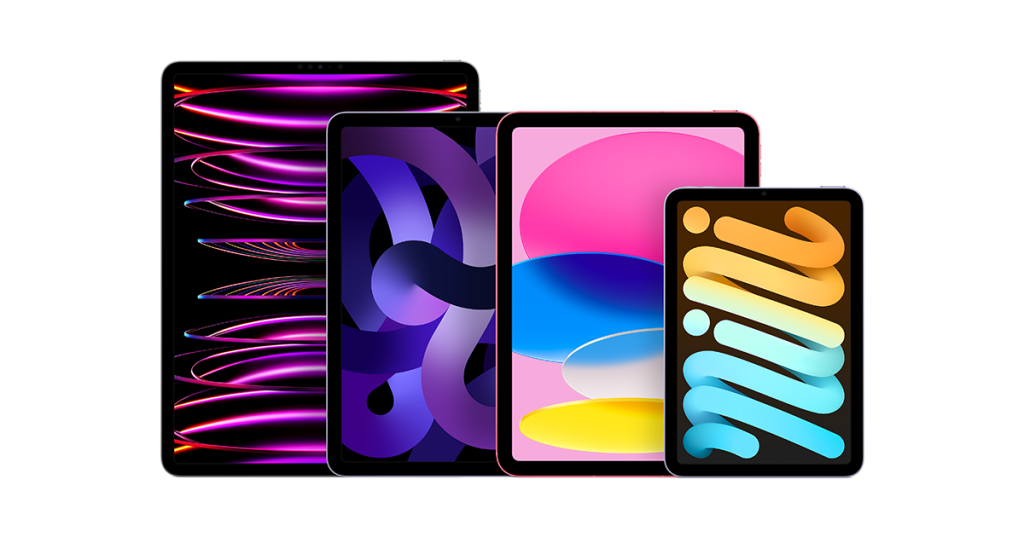
You may or may not know this about me, but my 12.9-inch iPad Pro is my main computer. Since the 2018 iPad Pro was released, I have been using an iPad as my main form of computer. It’s more versatile and more fun to use, the performance is amazing, and once you figure out a good workflow, it’s an amazing device. But before 2018, I didn’t view iPads as computers; I saw them as big iPhones.
So that got me thinking, even though the current iPad lineup is a little confusing and (to the average consumer) the iPads basically all look the same, are we in the middle of the best iPad lineup we’ve ever had? If not, then what is your favorite iPad Apple has ever released?
iPad design over the years
iPad designs are a bit tough to judge because they really have not changed too much when it comes to a design standpoint. Sure, we have gotten better materials and a better screen-to-body ratio, but outside of that, the design is relatively the same. So it is going to be tough to find a winner!
Original iPad


The original iPad was released back in April 2010. Steve Jobs believed there was a product category that would fit between an iPhone and a MacBook. That is how the iPad was born. It had a 9.7-inch LCD, had one home button, and was built out of aluminum and glass. The bezels were, of course, pretty chunky. It used the 30-pin connector and came with a blown-up version of iOS 4. The Apple pencil still did not exist, and there was no camera anywhere on the device, so there was still plenty of innovation to come.
2011 iPad revamp
After Apple released the 2010 iPad, they saw more adoption than expected. People seemed to agree with Steve Jobs that there was a place for a middle-ground device. Feedback from the 2010 iPad was great, but users wanted a bit more. Apple changed the build of this second iPad but got rid of the squared-off design and completely tapered off the edges. Apple added a rear and selfie camera for the first time on an iPad, made it thinner and lighter, and added a gyroscope. Overall it was a nice second-generation upgrade but relatively stayed looking the same. And that is the story of the regular iPad lineup: upgrade the internals, but keep the design the same.
This iPad would remain the same in terms of design until 2022. Apple would improve the tech inside as well as increase the screen size from 9.7 to 10.2in. But the design stayed extremely similar for the next 10 years.

iPad Mini 2012
This is where things started to change for the iPad. The iPad Mini gave customers a new form factor for the iPad. To this day, this iPad Mini form factor is one of the best-selling iPads ever. They slimmed the bezels down, especially around the sides. We also got a new 7.9-inch LCD, and it became the iPad most people wanted. It was easy to carry around and served its purpose of being a larger version of an iPhone but now so big that it was too heavy to wield for a while, like the original iPad.
This iPad mini stayed relatively the same until the 2021 iPad mini redesign. The colors changed a bit, and touchID was added. But since this form factor sold so well, Apple just continued to improve the internals but kept the design as is.



iPad Air 2013
The iPad Air lineup came up in 2013 as a new product that sits between the original iPad and the eventual iPad Pro. It was thinner, lighter, and sleeker than the iPad but still not as powerful as the iPad Pro. It was also considered a more premium option compared to the entry-level iPad. The iPad Air would get better internals, have a crisper screen, and was just overall more powerful. But again, the design stays relatively the same – large forehead and chin with a touchID button – but this iPad would eventually get Apple Pencil and keyboard support.
iPad Pro, Pre-2018
In 2015, Apple decided to create a behemoth of an iPad with the 12.9-inch iPad Pro. I remember when this came out, I was in awe of just how big this thing was. It still had the same form factor and design as all the previous iPads – large bezels with the touchID, Apple Pencil support, and keyboard support too. But what made it special was, first off, the size of the display but also the power of the internals. It was so fast at everything it did.





The current state of iPad
Top comment by Katalin E Pusztavari
I’ve had the G1 in 2010, G3, G4, Air2, IPP 12.9 G1, and now the 12.9 from 2022. I would have to say the last one with the magic keyboard is pretty amazing. The new pencil is super nice for grip and ease of keeping it charged. The 2010 G1 was pretty magical. I saw the future and it has been pretty good. The G1 12.9 lasted 7 years of daily, hard use. I can’t say anything bad about it, either.
So as of today, the iPad lineup (from a design standpoint) is all the same. All the iPads now have the same design language. The only difference, visually, is the colors they come in, the camera bump, and the size. From the iPad 10th gen to the 12.9in iPad Pro, they all have the squared-off industrial design language that started with the 2018 iPad Pro. This is my favorite form of the iPad. It feels complete, powerful, premium, and comfortable. The addition of FaceID in the Pro level iPads was also an extremely welcome addition.

But if you look at the lineup today, they all follow the same design. There is nothing unique, from a design standpoint, on each category of iPad. They are so similar that Apple now puts the actual name of each iPad on the rear of each iPad. So even Apple knows that they have reached the peak version of this iPad design. But this is still my personal favorite design.
Wrap-up
So, at the end of the day, it seems like the iPad is one of the least changed pieces of Apple hardware. From 2010 to 2018, they all stayed the same. New sizes and new variations of performance were introduced, but the actual design looked the same. From 2018 to 2022, Apple transitioned the design of each iPad category into what the 2018 iPad Pro looked like. And now, we have made it to peak iPad.
So which iPad is your favorite? Or maybe the question is, which iPad era was your favorite? Let’s discuss this in the comments!
FTC: We use income earning auto affiliate links. More.



Comments